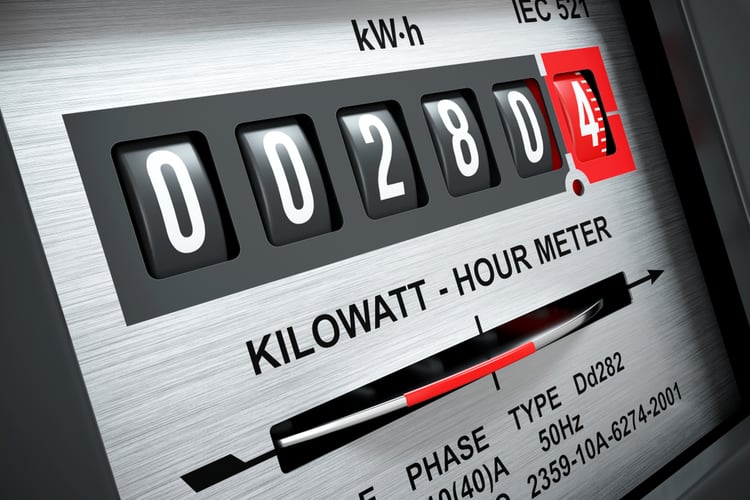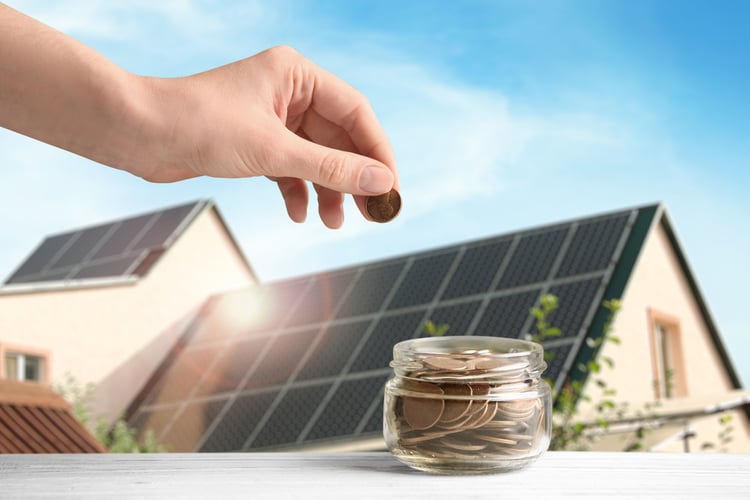Solar Buyback and Net Metering Programs: What Is the Difference?

After installing solar panels on a building, there may be times when the amount of electricity being generated is higher than consumption. Unless the building with the PV array has a battery system or another form of energy storage, surplus power is sent to the grid. You normally get credit for sending your extra kilowatt-hours to the grid, and it appears on your next power bill. However, the way in which this credit is calculated can vary.
Considering solar power for your building? Get a professional PV system design.
Depending on local regulations and how your electricity provider decides to manage surplus solar power, there are three possibilities:
- Net metering, where you get the full value of each kilowatt-hour as credit.
- Solar buyback, where the electricity provider uses different prices for kilowatt-hours consumed and solar generation sent to the grid.
- In states without a net metering or solar buyback policy, you may get no credit at all, unless your electricity provider offers the benefit voluntarily.
Here we will discuss the differences between net metering and solar buyback programs, and how they affect the savings achieved by a solar panel system.
Net Metering: Full Credit for Each Kilowatt-Hour

Net metering is exactly what its name implies: Each kilowatt-hour consumed from the grid is added to your monthly power bill, and each kilowatt-hour generated by solar panels and supplied to the grid is subtracted at full retail price.
- For example, if your building consumes 10,000 kWh from the grid during a billing period, and your solar power system has a surplus production of 2,500 kWh, you only pay for the 7,500 kWh difference.
- For a building located in NYC with an electricity tariff of 20 cents/kWh, this represents a power bill reduction from $2,000 to $1,500.
- In other words, you save the full value of each kWh generated by solar panels, even when that electricity is not used directly by your building and exported.
Your building may have billing periods where solar generation is higher than consumption, and you end up with a positive balance. When this happens, the way in which credits are handled depends on your electric company.
In many parts of the US, electric companies give you net metering until the point where generation is equal to consumption. Any surplus generation beyond this point is credited at a lower price, generally the “avoided cost rate”. For example, if your electricity provider purchases energy from local power plants at 8 cents/kWh, you also get that rate for any solar kilowatt-hours that exceed your monthly consumption.
There are very few power companies who actually pay you when onsite solar generation exceeds consumption. Normally, your credit will be rolled over to the next month, until building consumption is higher than solar generation and you have a chance to use it. Some electric companies will let you accumulate credit without limit, others will reset your balance to zero once per year, and a few of them may offer an annual payment at their avoided cost per kWh.
Solar Buyback: Different Prices for Consumption and Surplus Solar Energy

Not all electricity providers offer net metering at full retail price. Many of them offer a solar buyback program, where surplus electricity from solar panels is measured independently from consumption. In this case, you are charged the retail price for consumption, and are paid a reduced tariff for surplus generation. Solar buyback tariffs are also known as feed-in tariffs.
The difference can be demonstrated using the same example as above, where a building has a grid consumption of 10,000 kWh and a surplus generation of 2,500 kWh. With net metering, you are charged for the net consumption of 7,500 kWh, but the calculation procedure changes with a solar buyback tariff:
- You are charged for 10,000 kWh of consumption, at full retail price.
- You get separate credit for 2,500 kWh of surplus generation, at the solar buyback price.
For example, if the kWh price is 20 cents/kWh and the solar buyback tariff is 12 cents/kWh, you are charged $2,000 and get a credit of $300. In this case the power bill decreases to $1,700, and you are not saving the full value of the 2,500 kWh exported to the grid.
Even with a reduced feed-in tariff, there may be cases where the power bill credit is higher than the consumption charge. Just like with net metering, the way in which this credit is managed depends on the electricity provider, but cash payments are very rare. Generally, credits are rolled over to the next month until you consume them. Some companies offer unlimited rollover, while others reset your balance to zero once per year.
Solar power systems have a higher ROI when you have access to net metering, since all kilowatt-hours are credited at their full value. On the other hand, when you have a lower solar buyback tariff, monthly savings are decreased. However, this only affects you if a large fraction of your solar generation is exported to the grid. Regardless of how surplus energy is credited, you always save the full value of the solar kilowatt-hours that are used onsite.

Michael Tobias
Michael Tobias, the Founding Principal of NY Engineers, currently leads a team of 150+ MEP/FP engineers and has led over 4,000 projects in the US
Join 15,000+ Fellow Architects and Contractors
Get expert engineering tips straight to your inbox. Subscribe to the NY Engineers Blog below.

